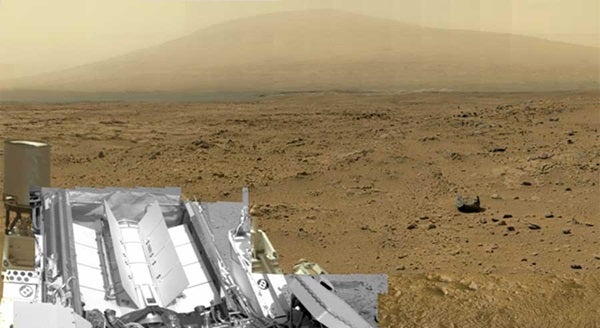The first NASA-produced view from the surface of Mars larger than 1 billion pixels stitches together nearly 900 exposures taken by cameras onboard Curiosity and shows details of the landscape along the rover’s route.
The 1.3-billion-pixel image is available for perusal with pan and zoom tools at http://mars.nasa.gov/bp1/.
The full-circle scene surrounds the site where Curiosity collected its first scoops of dusty sand at a windblown patch called “Rocknest” and extends to Mount Sharp on the horizon.
“It gives a sense of place and really shows off the cameras’ capabilities,” said Bob Deen of the Multi-Mission Image Processing Laboratory at NASA’s Jet Propulsion Laboratory in Pasadena, California. “You can see the context and also zoom in to see very fine details.”
Deen assembled the product using 850 frames from the telephoto camera of Curiosity’s Mast Camera instrument supplemented with 21 frames from the Mastcam’s wider-angle camera and 25 black-and-white frames — mostly of the rover itself — from the Navigation Camera. The images were taken on several different Mars days between October 5 and November 16, 2012. Raw single-frame images received from Curiosity are promptly posted on the public website http://mars.jpl.nasa.gov/msl/multimedia/raw/.
Mars fans worldwide have used those images to assemble mosaic views, including at least one gigapixel scene.
The new mosaic from NASA shows illumination effects from variations in the time of day for pieces of the mosaic. It also shows variations in the clarity of the atmosphere due to variable dustiness during the month while the images were acquired.










